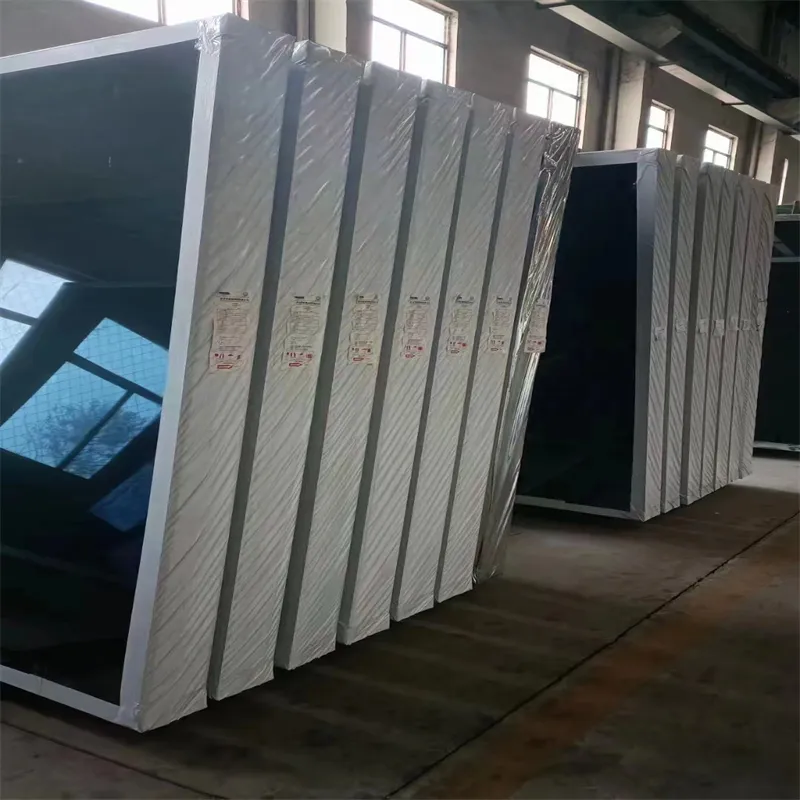Dec . 14, 2024 19:20 Back to list
10mm Low Iron Glass for Enhanced Clarity and Durability in Various Applications
Exploring the Benefits and Applications of 10mm Low Iron Glass
In the world of modern architecture and design, materials play a pivotal role in determining the aesthetic, energy efficiency, and functionality of buildings. Among the myriad options available, 10mm low iron glass stands out due to its remarkable qualities and versatile applications. This article delves into what low iron glass is, its advantages, and where it can be effectively utilized.
What is Low Iron Glass?
Low iron glass, sometimes referred to as ultra-clear glass, is a type of glass that contains significantly lower amounts of iron oxide compared to standard glass. The reduction of iron content results in a glass that is transparent, allowing for higher light transmission and a clearer view through the material. Generally, standard glass has a green tint due to iron impurities, but low iron glass eliminates this tint, rendering it crystal clear and aesthetically pleasing.
The thickness of 10mm provides additional durability and strength, making it an ideal choice for various applications, especially where safety and security are paramount.
Advantages of 10mm Low Iron Glass
1. Clarity and Aesthetics One of the most appealing features of 10mm low iron glass is its exceptional clarity. This attribute makes it perfect for applications where visibility and aesthetic impact are key concerns, such as facades, display cases, and glass partitions. The absence of a green tint allows for true color representation, enhancing the overall appearance of a space.
2. Light Transmission With high light transmission rates, low iron glass allows natural light to penetrate spaces, reducing the need for artificial lighting during the day. This not only contributes to energy savings but also promotes an inviting atmosphere within interiors.
3. Safety and Security The thickness of 10mm ensures that the glass is not only robust but also able to withstand impact better than thinner options. It is often used in environments where safety is a priority, such as in public buildings, shopping centers, and residential homes. Additionally, it can be tempered or laminated to further enhance its strength and resistance to breakage.
10mm low iron glass

4. Energy Efficiency Low iron glass can be combined with various coatings to improve its thermal efficiency. When used in energy-efficient windows, it can significantly reduce heating and cooling costs by minimizing thermal transfer between the indoors and outdoors. This eco-friendly benefit aligns with the growing trend toward sustainable building practices.
5. Versatility The versatility of 10mm low iron glass makes it suitable for a wide range of applications, including commercial buildings, residential projects, shower enclosures, glass railings, and even furniture. It can be easily customized in terms of shape, size, and finish, allowing architects and designers to create unique features.
Applications of 10mm Low Iron Glass
The applications of 10mm low iron glass are vast and varied.
- Architectural Facades Many modern buildings use large expanses of glass to create a dramatic effect. Low iron glass provides a sleek and sophisticated appearance, maximizing natural light and improving the overall energy performance of the building.
- Interior Design In interior spaces, 10mm low iron glass is used for partitions and balustrades, providing an open and airy feel while maintaining safety and functionality. Its clarity also makes it a popular choice for shelves and display cases, particularly in retail environments.
- Shower Enclosures The robustness of 10mm low iron glass makes it ideal for shower enclosures, where it can withstand moisture and provide a modern, seamless look.
- Furniture Low iron glass is increasingly used in furniture design. Coffee tables, dining tables, and shelving units can benefit from the elegant finish and clarity of this material, enhancing the overall aesthetic.
In conclusion, the unique properties of 10mm low iron glass make it a preferred choice in various sectors of construction and design. Its clarity, strength, and energy efficiency align perfectly with the trends of modern architecture, allowing for innovative designs that prioritize safety and aesthetics. As sustainable building practices gain momentum, low iron glass will likely continue to play an integral role in shaping the environments we inhabit. Whether in commercial or residential settings, 10mm low iron glass is undoubtedly an outstanding material that complements today's architectural and design needs.
-
Safety and Style with Premium Laminated Glass Solutions
NewsJun.24,2025
-
Reinvents Security with Premium Wired Glass
NewsJun.24,2025
-
Premium Float Glass Line for Modern Architecture
NewsJun.24,2025
-
Low Emissivity Glass for Energy-Efficient Architecture
NewsJun.24,2025
-
High-Performance Insulated Glass Solutions for Modern Architecture
NewsJun.24,2025
-
Elevates Interior Style with Premium Silver Mirror
NewsJun.24,2025
Related PRODUCTS














